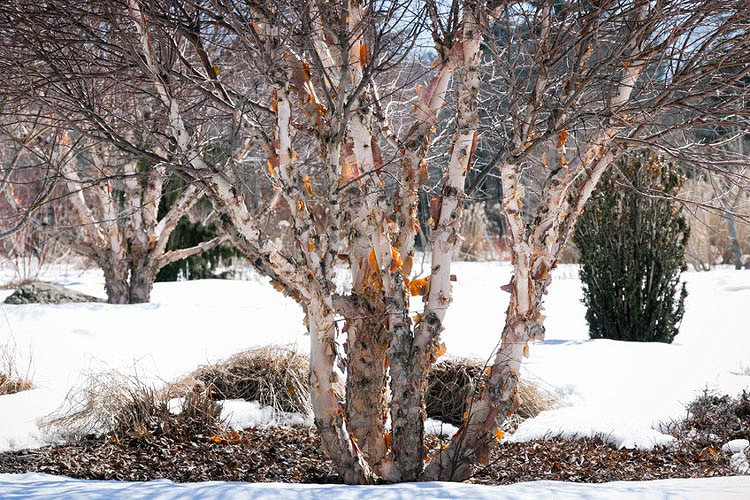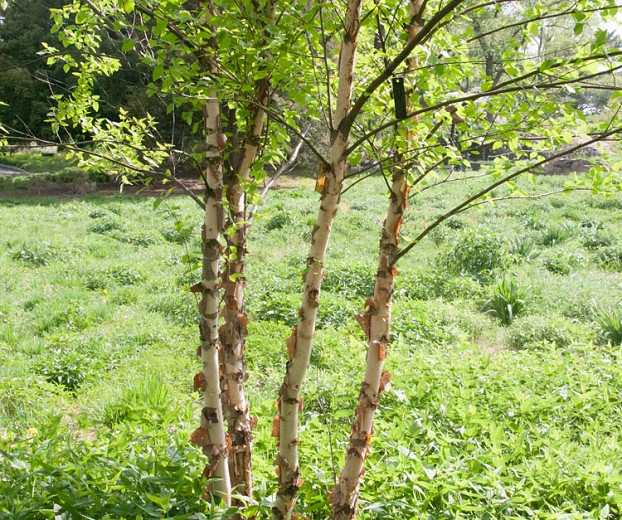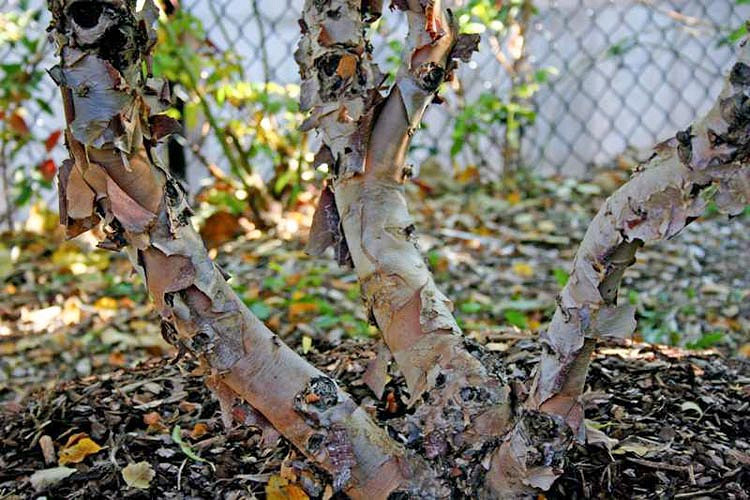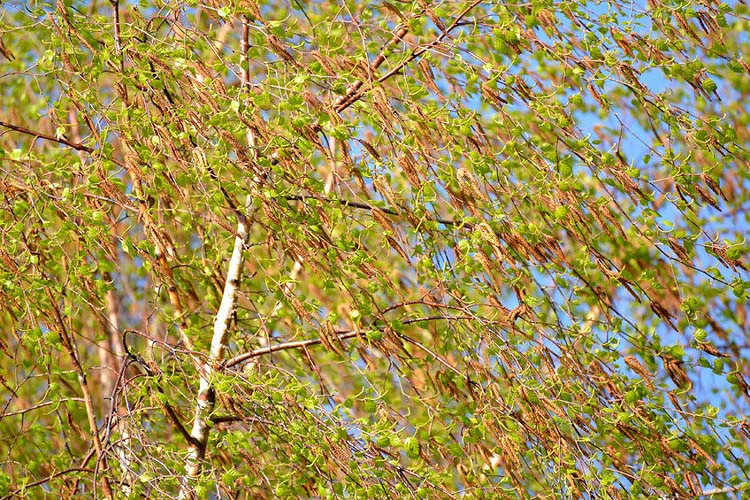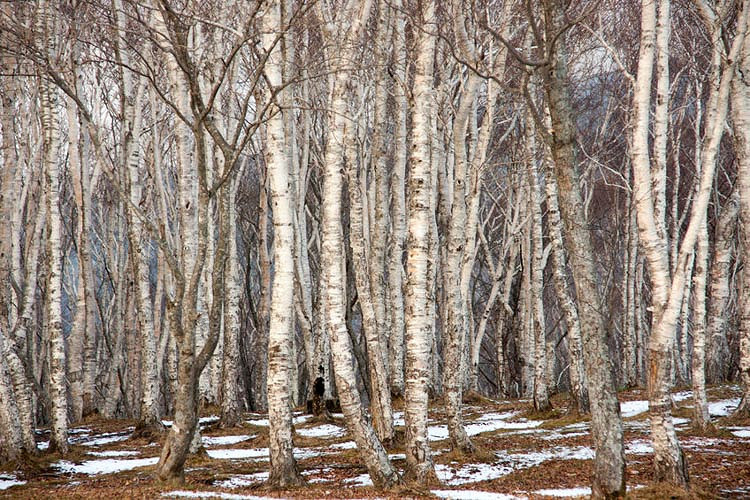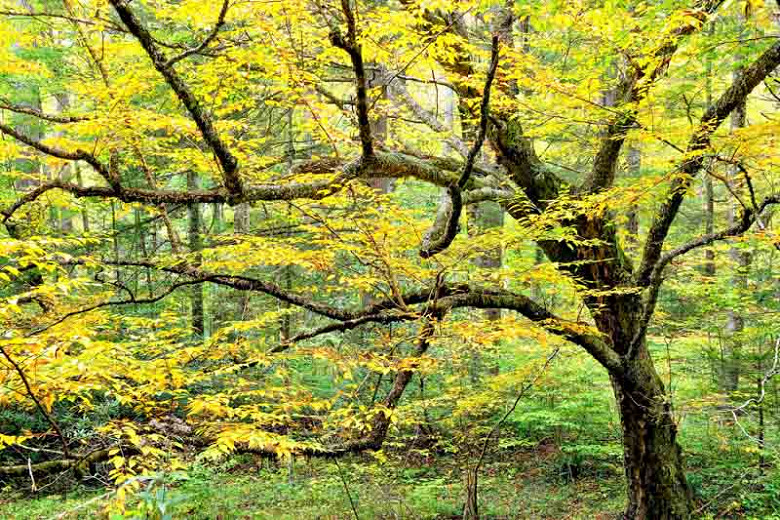Betula nigra (River Birch)
Betula nigra (River Birch) is a bushy deciduous tree prized for its incredible peeling bark. Salmon-pink, smooth and shiny at first, the bark flakes and curls in cinnamon-brown to blackish sheets.
Betula nigra (River Birch) is a bushy deciduous tree prized for its incredible peeling bark. Salmon-pink, smooth and shiny at first, the bark flakes and curls in cinnamon-brown to blackish sheets. Vigorous and fast-growing, this birch has a large, pyramidal, upright habit and bears diamond-shaped, glossy green leaves with silvery undersides, which turn yellow in fall. In spring, tiny yellowish-brown male flowers appear in drooping catkins while greenish female flowers appear in upright catkins. The female flowers give way to drooping cone-like fruits containing numerous small winged seeds.
Requirements
| Hardiness | 4 – 9 |
|---|---|
| Heat Zones | 1 – 9 |
| Climate Zones | 1, 1A, 1B, 2, 2A, 2B, 3, 3A, 3B, 4, 5, 6, 7, 8, 9, 10, 11, 12, 13, 14, 15, 16, 17, 18, 19, 20, 21, 22, 23, 24 |
| Plant Type | Trees |
| Plant Family | Betula – Birches |
| Exposure | Full Sun, Partial Sun |
| Season of Interest | Spring (Early,Mid,Late)Summer (Early,Mid,Late)FallWinter |
| Height | 40' – 70' (12m – 21m) |
| Spread | 40' – 60' (12m – 18m) |
| Water Needs | Average, High |
| Maintenance | Low |
| Soil Type | Chalk, Clay, Loam, Sand |
| Soil pH | Acid, Alkaline, Neutral |
| Soil Drainage | Moist but Well-Drained, Moisture Retentive, Poorly Drained, Well-Drained |
| Characteristics | Showy |
| Native Plants | United States, Midwest, Illinois, Indiana, Iowa, Kansas, Michigan, Minnesota, Missouri, Ohio, Wisconsin, Northeast, Connecticut, Delaware, Massachusetts, Maryland, New Hampshire, New Jersey, New York, Pennsylvania, Vermont, Southeast, Alabama, Arkansas, Florida, Georgia, Kentucky, Louisiana, Mississippi, North Carolina, South Carolina, Tennessee, Virginia, West Virginia, Southwest, Oklahoma, Texas |
| Tolerance | Clay Soil, Deer, Drought, Wet Soil |
| Garden Uses | Beds and Borders, Ponds and Streams, Rain Gardens |
| Garden Styles | Informal and Cottage, Traditional Garden |
